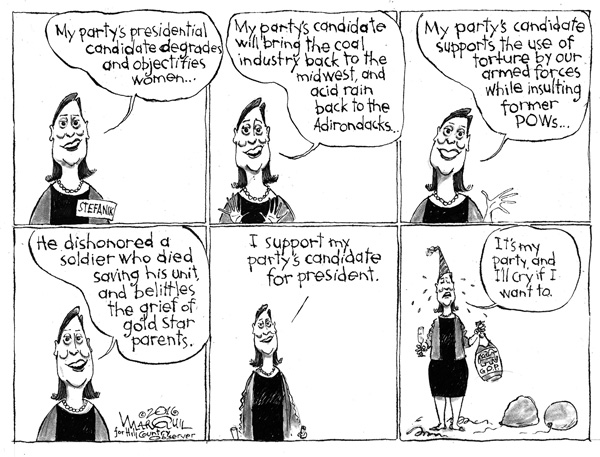Editorial August 2016
E D I T O R I A L
A victory for labeling that keeps us in the dark
It was probably only a matter of time.
Two years ago, legislators in Montpelier voted overwhelmingly to make Vermont the first state in the nation to require labeling of foods with genetically modified ingredients. For several years before that, Vermonters had spoken out loudly – and jammed legislative hearings – to demand the right to know what was in their food.
As expected, companies like Monsanto and others along the nexus of processed food, pesticides and biotechnology started plotting ways to keep the labeling law from ever taking effect. First they went to court, claiming their free-speech rights were being infringed.
And last year, after their court challenge ran aground, they went to Washington, where they hoped Congress would help them make an end run around Vermont’s law. The House – with the support of local Rep. Elise Stefanik, R-Willsboro – voted to block Vermont’s law and keep consumers in the dark. But the Senate didn’t go along.
So in recent months, it looked like labeling of foods containing genetically modified organisms might actually take effect – and not just in Vermont. As the July 1 date for implementing Vermont’s new law neared, several large food companies – including Kellogg’s, General Mills and Campbell Soup – decided that rather than produce separate packaging for a state of 600,000 people, they would simply apply labels nationwide to products containing GMO ingredients.
That was just too much for the forces of darkness, who began working overtime. So in late June, the Republican and Democratic leaders of the Senate Committee on Agriculture, Nutrition and Forestry suddenly announced they had reached a “compromise” to gut Vermont’s law and replace it with a new federal system for labeling GMO foods.
As usual in the Orwellian world of Washington doublespeak, this was presented by some members of Congress as though it were a great victory for consumers: “Bipartisan Senate compromise supports national system for labeling GMO foods!”
Do they really think we’re that dumb?
In reality, the new federal labeling system, which last month sailed through both the House and Senate and was signed by President Obama, wouldn’t require labels with actual words like “contains GMOs.”
Instead, food companies would be allowed to put QR codes on food packages that could be scanned by consumers with smartphones. This would lead the properly equipped shopper to product data that might include, if one can find it, information about genetically modified ingredients. It sounds like a system designed to hide information about genetic manipulation from all but the most determined consumer.
Many of the details of this new non-label labeling system remain to be worked out over the next two years by the U.S. Department of Agriculture. In the meantime, there essentially will be no labeling. But at least Vermont’s law has been invalidated, which really was the whole point of this exercise.
In a repeat of last year’s performance, Stefanik stood alone among the region’s congressional delegation in supporting this travesty. But she was far from alone nationally: The anti-labeling labeling bill passed by a veto-proof margin of 306-117 in the House and by 63-30 in the Senate.
When it comes to valuing the public’s right to know, it seems there is a long way between Montpelier and Washington.


